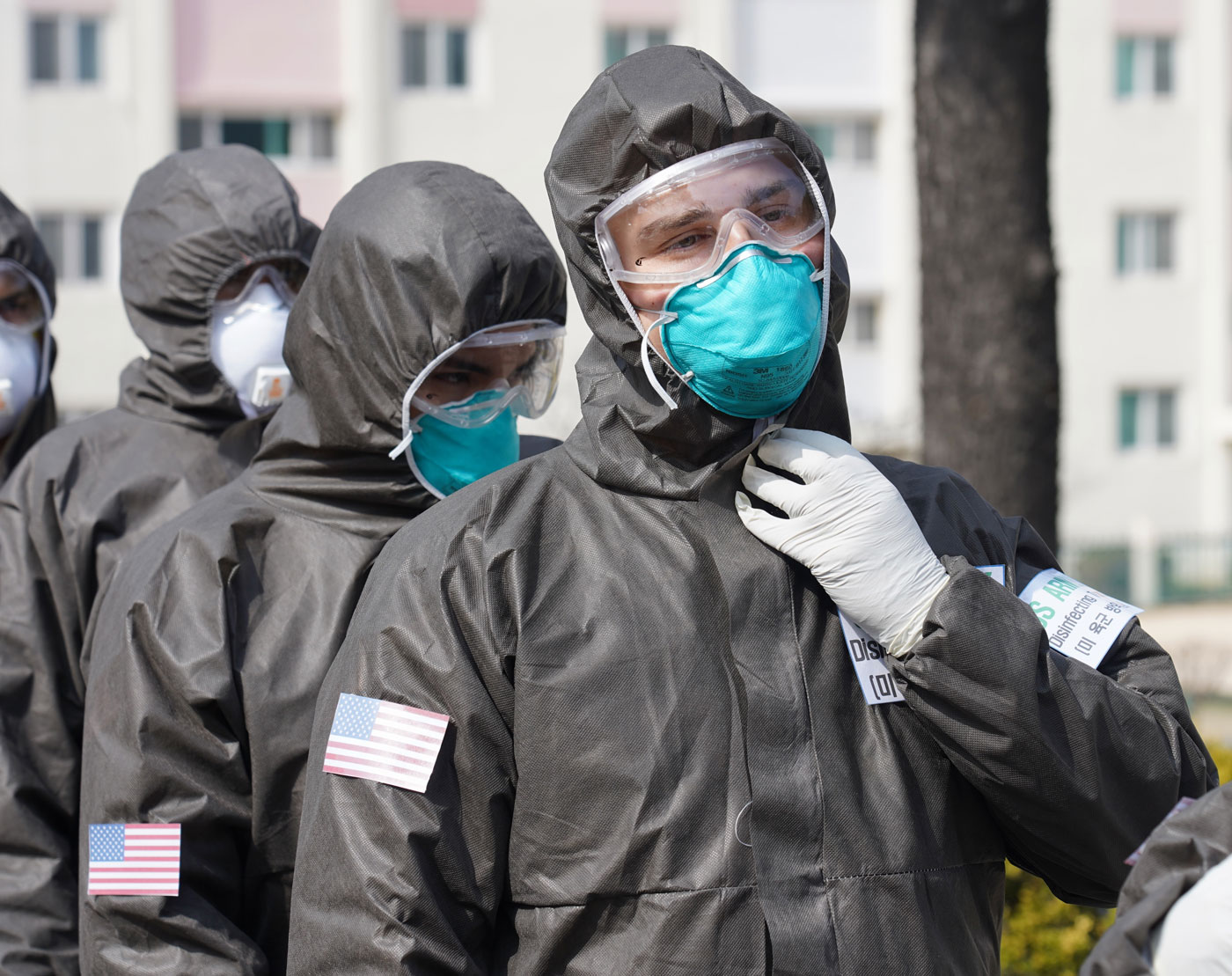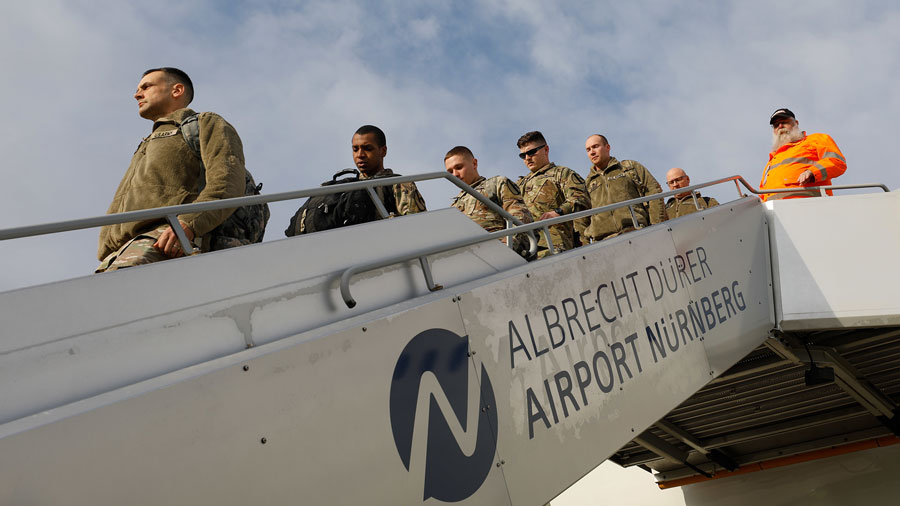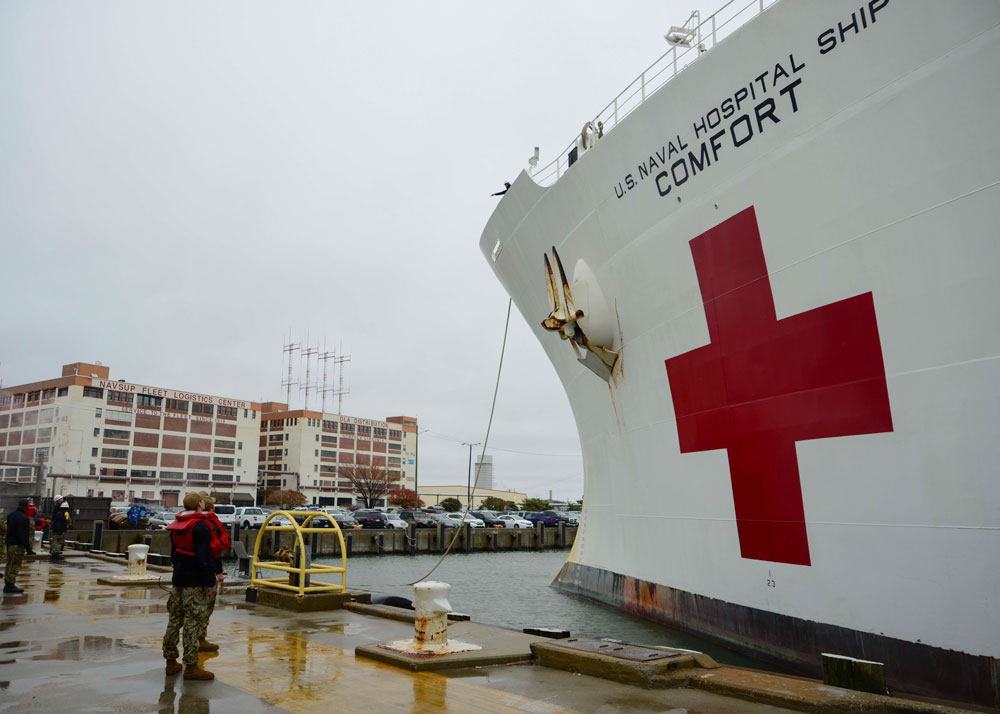US European Command Remains Ready, Despite COVID-19 Threat
US European Command prepares for worst-case scenario with respect to the potential spread of COVID-19, but maintains that forces remain ready.
Anita Hawser
20 March 2020

Photo by Kevin Bell
THE MILITARY AND CORONAVIRUS
HOW IS THE MILITARY IMPACTED BY THE GLOBAL PANDEMIC?
As the COVID-19 pandemic spreads globally, military forces are cancelling training exercises and moving into combat mode to try and minimise the impct of the epidemic on the wider public, members of the military, and ensure that overall military readiness is not compromised during these challenging times..
“This is very difficult to manage,” said Secretary of the US Army Ryan McCarthy. “We're working on the screening, and the protocols to manage this. National security is a tough business. We've got to still be able to grow the force even under these incredibly, quite frankly, extraordinary set of conditions that none of us have ever faced before.”
Large-scale land military exercises like DEFENDER Europe 20 in Antwerp, Belgium, a US-led multinational exercise, which would have seen the largest deployment of US-based forces to Europe in more than 25 years with 20,000 soldiers deployed directly, has curtailed the movement of personnel and equipment from the US to Europe as a result of the spread of the virus. “The health, safety and readiness of our military, civilians, and family members is our primary concern,” officials said. “There are many details still being worked and discussed with our allies and partners.”
In a telephone news conference on the 20 March, General Tod Wolters, Commander of US European Command said that an additional 17,000 US soldiers were scheduled to arrive in Europe to stress the system from a ground manouevre perspective during Defender 20-Europe, but that it would now be only 5,000 to 6,000 additional US soldiers.
"We've had to cancel some live play exercises out of Poland and Germany, " he said, adding that forces would still get some part task training and basic gunnery training. "We'll still accomplish 40% of the desire that we sought in Defender 20-Europe," he said. "We'll be able to get part-task training and end up with a 40% to 45% readiness gain. We remain well prepared and vigilant and focused on retaining skills in all domains. Just the mere aspects of cooperation and planning that went into each of the compartments of the exercises was a gain in training."
US Europe Command said linked exercises to Exercise DEFENDER Europe 20 — Dynamic Front, Joint Warfighting Assessment, Saber Strike and Swift Response — would not go ahead as planned. US armoured brigade combat teams already deployed to Europe will conduct gunnery and other combined training events with Allies as part of a modified Allied Spirit exercise. Forces already deployed to Europe for other linked exercises will return to the United States. Changes are anticipated to the deployment timelines of soldiers currently in Europe, redeployment of US-based equipment, and the next Atlantic Resolve rotation.
“We’re continually reiterating to our international allies that we are committed to exercises for the foreseeable future,” McCarthy said. “This is an extraordinary set of circumstances and we're just trying to adjust. We'll get these back on track as soon as we get through the vaccine protocols and screening, and get to a different place.”
US Forces Korea (USFK) has been on the frontline of the battle against COVID-19. Of the roughly 58,000 people at USFK daily, only nine –- who all live off post -– are reported to have been infected with COVID-19. The key to their success, according to their commander, is treating the epidemic like combat operations.
"We initiated 24/7 operations, with fully operational staff in our ops center and provided daily updates,” said Gen. Robert Abrams, commander of USFK, adding the importance of swift action and a professional relationship with the South Korean government.
“[Gen. Abrams] has been able to get a hold of the situation and stop it cold,” McCarthy said. “A lot of it was these screening procedures that they put in place and then how quickly they can move and get tests, testing equipment, but then did just the 24-hour vigilance and communications be it social media and other platforms that they've been able to, to continue to stay on top of this.”
Of the 72,000 US uniformed military members under General Wolters command, there are 35 reported cases of the COVID-19 virus. Gen. Wolters said measures such as social distancing and shift changes were having a positive impact. Nevertheless, US Europe Command is preparing for the worst-case scenario with respect to the potential spread of the virus, and if this scenario were to play out, the General could be forced to seek assistance from forces outside his command. "We don't forecast that to occur," he stressed, "but conditions in the environment will dictate that in the future."
"We in the military often plan for tragic events," Gen. Wolters continued. "We continue to adjust not in weeks and months, but in days and hours. We're in a position to sustain the current readiness posture and should be able to sustain force at a readiness level to deter on continent [threats]. The added advantage we have in Europe is that we can make sure we can cover down willingness of the nations and [the NATO] alliance to weather the storm and protect the people."

END STRENGTH OF FORCES IS CRITICAL
In northern Italy at US Army Africa headquarters, another military installation has also found itself in the middle of the global pandemic.
“[Maj. Gen.] Roger Cloutier [commanding general of USARAF] is surrounded by people that have been exposed -- and quite frankly, many lost their lives -- and he's got that installation locked down,” McCarthy said.
“Those overseas leaders are at the forefront of the fight,” he added. “We've learned a lot from them. We're talking to them a lot, trying to get them more support …”
A domestic travel ban is in place in the US for Army personnel, with duty station moves and temporary assignments halted. However, roughly 1,200 recruits recently left for Basic Combat Training after officials had them on standby until a plan was set. First, recruits will be tested for COVID-19 at their military entrance processing stations before departing to one of four Army training facilities.
“We’re looking at how we can put protocols in place and balance the challenge of social distancing with meeting end-strength goals,” McCarthy said. “End strength is critical. We don’t want to be in a position where we are a weakened force by not having end strength to deal with worldwide threats.”
Once troops finish their training, they are screened again before they leave for another location. However, the finer details are still being worked out.
McCarthy said senior leaders were receiving information by the minute, The US is currently on track with Italy with confirmed coronavirus cases. If those numbers continue to rise, Army leaders may have to re-evaluate how basic training is conducted.
“Decisions are being made on a day-by-day basis,” McCarthy added. He urged all people -– regardless of military status -– to listen to the health professionals, and self-isolate themselves as much as possible.
Other Army readiness programmes, like the implementation timeline of the Army Combat Fitness Test, or ACFT, has not changed, McCarthy said. Right now, Army leaders receive information around the clock and are unsure what the next day will bring. “This is a fog of war, and it’s tough,” he said.
Regarding modernisation efforts, industry partners are still “bending metal and working,” he said. “As long as we can continue to work under these conditions, we can continue to proceed” with the Army’s modernisation priorities.
Earlier this week, Army leaders chose Bell and Sikorsky, as well as Boeing, to move forward in the Army’s Future Long-Range Assault Aircraft programme, or FLRAA, ahead of the 2030 timeline to field a new assault aircraft.
Although modernisation and readiness are pushing forward, in the end, the US Army says it’s people first. “We’re going to learn a lot more and we're going to continue to refine our protocols and do what we have to do to take care of our people,” McCarthy said. “But still maintain the readiness to respond to global activity –- it’s a very dangerous and complex world on a good day.
Military hardware and equipment is also being mobilised as part of US nation-wide measures to treat those affected by the virus. One example of this are the hospital ships USNS Comfort and USNS Mercy. The Comfort — based in Virginia — was scheduled to sail to New York. The Mercy will sail from San Diego to Los Angeles. Each ship has a 1,000-bed capacity.
The hospital ships will be used to provide general medical and trauma care to members of the public, leaving local hospitals to concentrate their scarce resources on COVID-19 patients.

CONTAINING THE SPREAD: TREATING THE EPIDEMIC LIKE COMBAT OPERATIONS
At a navy news conference at the Pentagon on the 19 March, Navy Rear Adm. Bruce Gillingham, Surgeon General of the US Navy, said since December 2019, Navy medicine had worked to mitigate the spread to forces and families deployed at sea, stationed overseas and in the US.
Rear Admiral Gillingham says it is ensuring sailors that display COVID-19 symptoms are tested isolated and treated, with samples being sent to shore for testing at a Department of Defense laboratory. “Sympotmatic sailors live in separate quarters where they can maintain social distancing,” the Admiral stated, adding that is looking to improve at sea testing methods for shipboard diagnostics.
Concerns that naval ships could become like public cruise ships, where the infection rate spreads rapidly, Admiral Gillngham says everyone on naval ships is screened before they come on board. Those that appeared ill were not allowed on board and once a ship leaves port, it will not return to port for a period of 14 days or later so the Navy can ensure they are not inadvertently transmitting the virus. “We've only had a small handful of cases of sailors assigned to ships,” said Admiral Gillingham. “We're watching that very carefully.” He said the Navy had not seen the active transmission of COVID-19 at sea, with most of the positive cases occurring on board ships at port.
NATO Secretary-General Jens Stoltenberg said the alliance's ability to operate had not been undermined by COVID-19 and that it had put in place measures to ensure the Alliance can continue to do its work.
The Supreme Allied Commander Europe, General Tod Wolters, underlined that mitigation measures continue to be taken, and that the Alliance’s ability to conduct its missions, operations and activities has not been affected – including air policing, maritime deployments, NATO's multinational battlegroups in the eastern part of the Alliance, and operations from Afghanistan to Kosovo.
In the UK, the Ministry of Defence will put an additional 10,000 military personnel at a state of high readiness and put Army Reserves on standby to support public services as part of a new COVID Support Force announced by the Defence Secretary. Military personnel are encouraged to follow Public Health England guidelines in terms of social distancing and hand washing, but it is unclear whether specific measures have been put in place with respect to screening personnel before they board naval vessels, embark on missions, operations or training.
The Standing Joint Command (SJC) in Aldershot, controls the defence aspects of the governments response to domestic events. So far this year they have conducted planning for BREXIT, flooding and now they are planning in support of the government for the Coronavirus. There are 20,000 troops currently on standby to support whatever request the UK government makes of the Armed Forces (logisitics, medical support, transport).
The UK military has assisted with repatriation flights from China and Japan. The MoD is also providing specialist military planners to Local Resilience Forums who are providing support to public services, local authorities and emergency services. Approximately 150 military personnel will be trained to drive oxygen tankers and scientists from the Defence Science and Technology Laboratory are supporting Public Health England’s effort to understand the virus and tackle the spread.
There was no readily available information on public news sites and social media, however, on how the British military is seeking to minimise the spread of the COVID-19 virus amongst personnel on deployment, on board ships, training exercises or back at home or whether the British Army's Medical Brigades, which have a wealth of experience in trauma medicine and combating infectious diseases such as Ebola, would provide support to the NHS frontline. Some of the Army's medical brigades were due to deploy to Antwerp for the DEFENDER-20 Exercise, but the medical component of that exercise has been cancelled due to the spread of the virus.
The British Army has indicated that some temporary changes will be made to the recruitment process in order to keep everyone safe. While the Army is still accepting applications, and the National Recruitment Centre is still operating, its offices are closed to the public until further notice. The Army said it didn't know yet how long these measures will be in place.